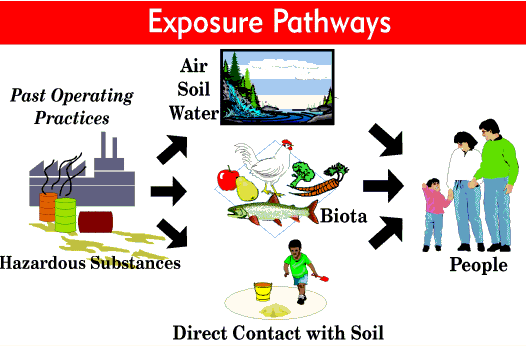Slide 1
Agency for Toxic Substances and Disease Registry
|
Slide 2
ATSDR’s Mission
The mission of the Agency for Toxic Substances and Disease Registry is to prevent exposure and adverse human health effects and diminished quality of life associated with exposure to hazardous substances from waste sites, unplanned releases, and other sources of pollution present in the environment.
|
Slide 3
Goals- Evaluate human health risks from toxic sites and releases and conduct timely, responsive public health actions.
- Determine the relationship between exposure to toxic substances and disease.
- Develop and provide reliable, understandable information for affected communities and stakeholders.
- Build and enhance effective partnerships.
|
Slide 4
Community Involvement
ATSDR provides opportunities and suggests methods to actively involve community members in actions to protect the public’s health from risks posed by hazardous wastes or other sources of environmental pollution.
|
Slide 5
Why are Community Health Concerns Important?
ATSDR Staff - Solicit and listen intently to community health concerns
- Review all health concerns to provide a basis for developing developing products that address issues
- Ensure that community concerns are accurately reflected in ATSDR site-related documents
|
Slide 6
Health Education and Promotion- Makes environmental science more accessible and relevant to community health concerns and needs
- Provides technical assistance to health partners
- Promotes collaborations to respond effectively to health problems
- Develops environmental health expertise in the local health provider and public health infrastructures
|
Slide 7
Health Education and Promotion- Promoting Community Involvement
- Conducting educational needs assessments
- Producing a variety of site-specific materials and disseminating them in many ways
- Developing Partnerships and funding cooperative agreements
- Producing educational products and courses for health care providers
|
Slide 8
ATSDR’s Spring Valley Involvement
- Past
- American University Day Care
- Present
- Needs Assessments
- Development of Investigation Protocol
- Future
- Exposure Investigation
- Health Consultation
|
Slide 9
Spring Valley Requests for Assistance- Petition letter from residents through a law firm to conduct the public health assessment process.
- DC Health request for further biological testing of residents.
- ATSDR plans to coordinate with the Mayor’s Science Advisory Panel.
|
Slide 10
Spring Valley Environmental Data- Soil data - composite and grid samples from area-wide sampling
- Air data - indoor samples from 2 residences
- Water data - check concentrations in municipal water system
- Misc. - any other applicable data which become available during the assessment process
|
Slide 11
Evaluating Pathways
How do people come into contact with contaminants?
|
Slide 12
 |
Slide 13
Proposed Spring Valley Exposure Investigation
Robert Johnson, MD
|
Slide 14
ATSDR Exposure Investigations…
Look at possible human exposure to hazardous substances in the environment by analyzing environmental (water, air, soil) or biological specimens
|
Slide 15
ATSDR Exposure Investigations…- Limited in scope. Not a “research” study
- Focus on “worst case scenario”…those most likely to be exposed
- Look at exposure, not likelihood of illness
- Often lead to further public health actions
|
Slide 16
Spring Valley Exposure Investigation- Time frame: early in 2002
- Participants: top 10 homes with highest soil arsenic levels where residents have had some contact with the soil
- Particularly interested in homes with children
- Choice of blood, urine, or hair samples
|
Slide 17
Blood Arsenic Testing- (+) Good measure of exposure
- (-) Somewhat invasive sampling
- (-) Limited to several hours post- exposure
|
Slide 18
Urine Arsenic Testing- (+) Non-invasive sampling
- (+) Accurate measure of exposure
- (-) Limited to 2-3 days post-exposure
|
Slide 19
Hair Arsenic Testing- (+) Past exposure: 2-inch = 5 months growth
- (-) Uncertain what is internal vs. external contamination
- (-) Cosmetic blemish—moth-eaten bald spots
|
Slide 20
Reporting Results- Individual letters to participants
- Exposure Investigation report with summary data without personal identifiers
- ATSDR toll-free number
|




 ShareCompartir
ShareCompartir